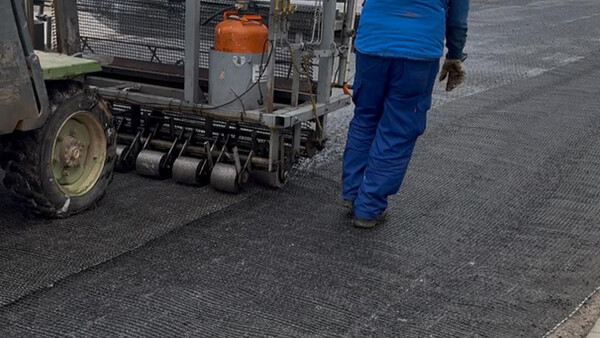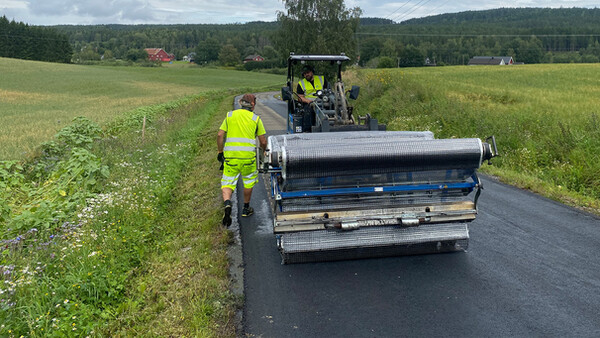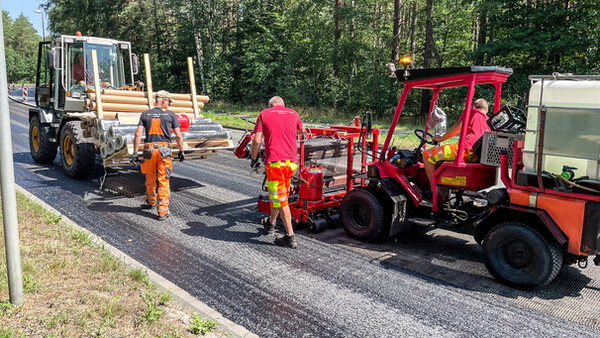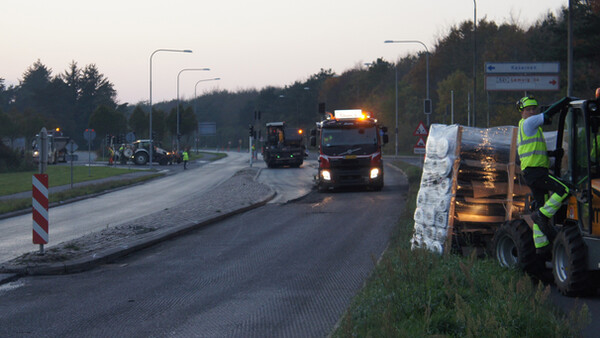Asphalt pavement repair - Widoczna street - Warsaw, Poland
Prior to 2006, Widoczna street in the populous city of Warsaw, Poland, was repeatedly being repaved with new layers of asphalt being installed on top of the existing hexagonal paving slabs.
On this page
- Topic
- Asphalt pavement repair
- Object
- Widoczna street
- City
- Warsaw
- State
- Mazovia
- Country
- Poland
- Date
System
S&P Case Study
- Download PDF (1.6 MB)
Project Description
Situation
The City Road Administration (ZDM) of Warsaw were looking for a more durable solution as a result of repeatedly needing to repave Widoczna street due to excessive cracking and deformation on the wearing course. Prior to 2006, the road was being repaired approximately every 3 years and this led to not only high maintenance costs, but also traffic disruption and a needless use of resources every time the road was being repaved.
However any solution that was offered had to be carried out on a weekend and fall in line with the time parameters of road closures. So essentially road repairs may only start on the Friday evening, but the road had to be re-open to traffic on the Monday morning latest.
Solution
S&P recommended the use of S&P Carbophalt® G combined with a high-strength SMA surface layer over the entire surface and the City Road Administration (ZDM) of Warsaw accepted the recommendation and "took the risk" of trying a new solution to resolve the recurring problems on the road.
In November 2006, the damaged road surface was milled to a depth of 4 cm, leaving approximately 1 cm of old asphalt on top of the existing hexagonal paving blocks. S&P Carbophalt® G was then installed onto bitumen tack coat on top before being covered with a 4 cm SMA asphalt layer wearing course.
Project tracking
As the goal of the project was to increase the durability of the road, S&P continued to track the condition of the road during the following years - ultimately with great results. Even 10 years later in 2016, the road condition was still great meaning that the S&P asphalt reinforcement grid had definitely served it's purpose and significantly increased the service life of the road as well as protecting the new wearing course from crack propagation from the subgrade - especially when considering the previous re-paving cycles of 3 years.
The increase in durability of the road was not surprising considering the solution provided. S&P asphalt reinforcement grids serve to distribute the traffic load and shear forces that occur in the pavement structure. This ultimately helps to prevent the formation of microcracks, which when formed often lead to wider damage and cracking which becomes visible on the surface. Not only that, but in the this particular case the preimum properties of carbon fibre in S&P Carbophalt® G helped to increase the stiffness of the asphalt construction, as a result of the large force absorption capacity of the fibres.
CO2 Emission Savings
With the knowledge that the road required re-paving every three years prior to the intervention with S&P asphalt reinforcement grids, we were able to use this information to perform a calculation comparison utilising Global Warming Potential figures from various national databases. By implementing the solution provided by S&P, CO₂-equivalent emissions were reduced by approximately 60% in material usage alone on this project over the observed 10-year period. This calculation focuses solely on materials; the actual CO₂ savings would be significantly higher when factoring in additional activities such as milling, transport and general jobsite operations associated with repeated repair cycles.
Material
S&P Carbophalt® G
S&P Carbophalt® G consists of carbon and glass fibre strands that are 100% impregnated with bitumen. The flexible, adaptable grid allows laying in curves as well as adaptation of the meshes to the subgrade or its surface structure. The granular aggregate of the new asphalt layers can penetrate the grid meshes, and a very high layer bond can be achieved via this interlocked connection. This ensures that the fibres are optimally bonded and can effectively absorb crack-generating tensile forces. This effectively prevents the reflection of cracks from the existing pavement into new asphalt layers and the resulting consequential damage. The reinforcement also increases the overall stiffness of the system and thus prevents future stress cracks.





























